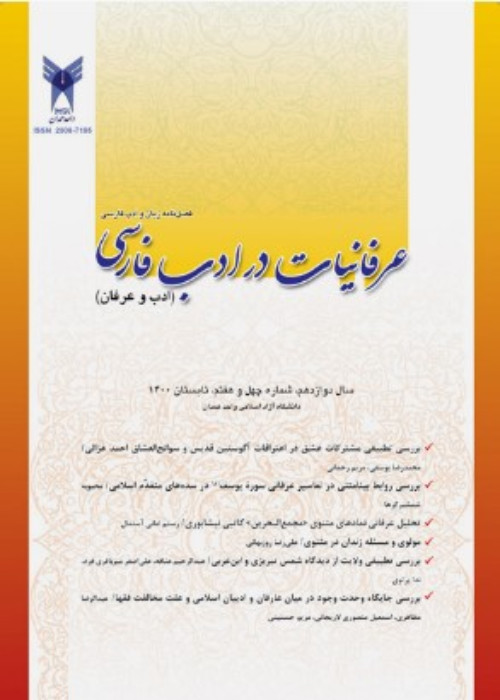Studies and Analysis Semiotic of the Mevlevian Sama
Author(s):
Abstract:
Sama, as one of the most prominent characteristics of Sufism, is a combination of music, dance and prayer, which in turn are accompanied by specific and certain rituals. First performed in the tenth century, it has survived throughout time and the criticism of dissidents, thanks to the support of its followers. Such as it is with every other religious ethic, this ethic too has an appearance and acore, the way to the core being one which is not easily attainable.
After Molana, his descendants systemized Sama in Turkey.Unlike the past, in a time when the rituals were performed solely by Sufis, Sama has also been presented publicly in the recent years. This article endeavors to study the structure and typology of Sama by benefitting from observational and experimental studies. It tries to gather different opinions concerning the various signs in Sama, in order to provide the audience with an understanding of such signs which are employed in religious and gnostic texts and throughout the rituals themselves.
After Molana, his descendants systemized Sama in Turkey.Unlike the past, in a time when the rituals were performed solely by Sufis, Sama has also been presented publicly in the recent years. This article endeavors to study the structure and typology of Sama by benefitting from observational and experimental studies. It tries to gather different opinions concerning the various signs in Sama, in order to provide the audience with an understanding of such signs which are employed in religious and gnostic texts and throughout the rituals themselves.
Language:
Persian
Published:
Erfaniyat Dar Adab Farsi, Volume:5 Issue: 20, 2014
Pages:
37 to 56
magiran.com/p1552680
دانلود و مطالعه متن این مقاله با یکی از روشهای زیر امکان پذیر است:
اشتراک شخصی
با عضویت و پرداخت آنلاین حق اشتراک یکساله به مبلغ 1,390,000ريال میتوانید 70 عنوان مطلب دانلود کنید!
اشتراک سازمانی
به کتابخانه دانشگاه یا محل کار خود پیشنهاد کنید تا اشتراک سازمانی این پایگاه را برای دسترسی نامحدود همه کاربران به متن مطالب تهیه نمایند!
توجه!
- حق عضویت دریافتی صرف حمایت از نشریات عضو و نگهداری، تکمیل و توسعه مگیران میشود.
- پرداخت حق اشتراک و دانلود مقالات اجازه بازنشر آن در سایر رسانههای چاپی و دیجیتال را به کاربر نمیدهد.
In order to view content subscription is required
Personal subscription
Subscribe magiran.com for 70 € euros via PayPal and download 70 articles during a year.
Organization subscription
Please contact us to subscribe your university or library for unlimited access!


